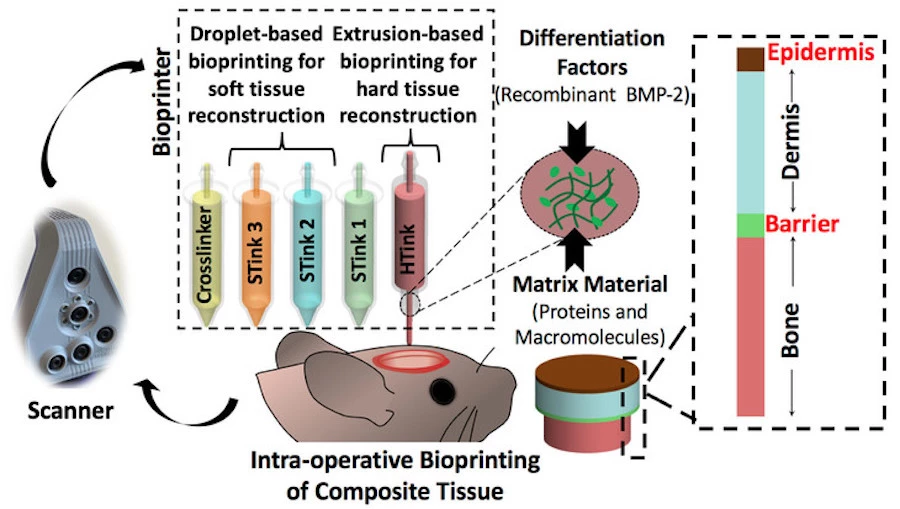Researchers at Pennsylvania State University have developed a method to patch up injuries by 3D printing both hard and soft tissues at the same time, using two different “bioinks.” In tests on rats, the team was able to repair holes the skulls and skin of the rodents in minutes.
After brain surgery, patching up the point of entry can be a problem. The hole in the skull needs a new piece of bone, taken either from somewhere else in the patient’s body or a deceased donor. The skin above it also needs to be repaired.
3D printing technology could help. In recent years scientists have experimented with “bioprinting” living cells, creating tissues as diverse as skin, organs and bones, but injuries that penetrate multiple tissue types can be tricky. So for the new study, the Penn State team set out to fix that.
"There is no surgical method for repairing soft and hard tissue at once," says Ibrahim Ozbolat, corresponding author of the study. "This is why we aimed to demonstrate a technology where we can reconstruct the whole defect – bone to epidermis – at once.”
Doing so requires inks with very different consistencies, and as such two different methods of bioprinting. The hard tissue was printed through an extrusion-based technique, while the soft tissue was droplet-based.

The team’s hard tissue ink is made up of collagen, chitosan, nano-hydroxyapatite and a few other compounds, but most importantly mesenchymal stem cells – those that differentiate into bone, cartilage and bone marrow fat. The ink is extruded at room temperature, but soon warms up to body temperature. The soft tissue ink is printed in layers, alternating between collagen and fibrinogen, along with compounds that enhance crosslinking and growth.
In initial lab tests, the researchers patched up holes in each tissue type alone. Once they had them mastered individually, they moved onto both together in a single surgical procedure, repairing holes in the bone and skin of the heads of live rats. Between the bone and the skin, the team deposited a barrier layer that prevented skin cells from migrating into the bone.
"It took less than five minutes for the bioprinter to lay down the bone layer and soft tissue,” says Ozbolat.
The team conducted the process more than 50 times, and found that the soft tissue wounds closed up 100 percent within four weeks. In tests on its own, the bone tissue regrew to cover around 80 percent of the defect area within six weeks, but when paired with the soft tissue printing, it only managed 50-percent coverage in six weeks.
The team says that adding vascularizing compounds will be crucial to improve blood flow to the bone and boost healing. The next steps will also be to test the method on larger animals.
The research was published in the journal Advanced Functional Materials.
Source: Pennsylvania State University




